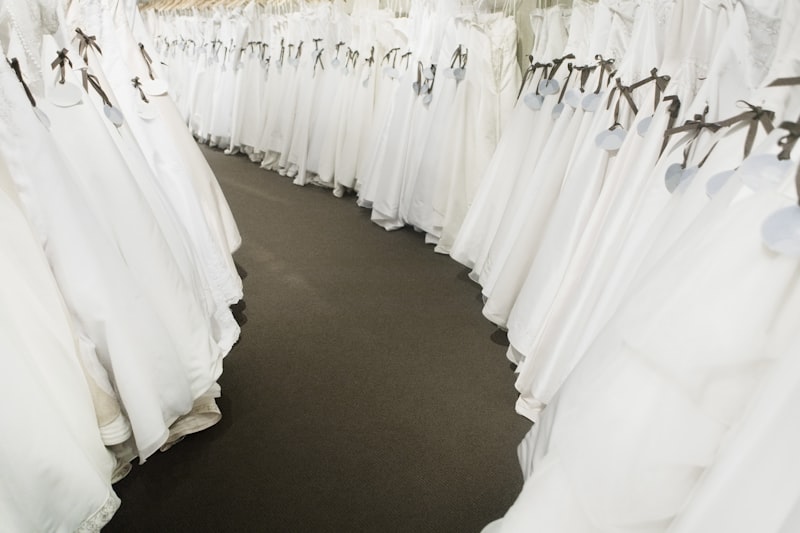Bridal Dress Trends Through the Decades: A Timeless Journey
Bridal Dress Trends Through the Decades: A Timeless Journey
Wedding dresses have always been an essential part of bridal fashion, symbolizing love, commitment, and style. Understanding bridal dress trends through the decades not only provides insight into the changing tastes and influences in fashion but also highlights the significance of individual styles that have made lasting impressions. This article will take you through a comprehensive journey exploring the evolution of bridal dresses from the 1920s to the present day, analyzing key trends, fabrics, and iconic styles. You'll discover what styles define each decade, how cultural shifts influenced these changes, and tips on choosing the perfect bridal dress.
The Roaring Twenties: Flapper Glamour
The 1920s was a decade of liberation and change, reflected in the iconic flapper dresses characterized by dropped waistlines and intricate beadwork. Popularized by movies and jazz culture, brides embraced a more relaxed silhouette. The use of fabrics like silk and satin became prevalent, while embellishments such as sequins and feathers complemented the stylish look. Flapper bridal dresses often featured:
- Decorative fringe
- Art Deco patterns
- Shorter hemlines

The 1930s to 1940s: Elegance and War-Time Simplification
As the world faced the Great Depression and World War II, bridal fashion showed a remarkable shift towards practicality without compromising elegance. The 1930s saw longer hemlines and more fitted silhouettes with intricate detailing, while the 1940s introduced simpler designs due to fabric rationing. Key features included:
- Long sleeves
- Natural waistlines
- Minimal embellishments
| Decade | Key Features | Popular Fabrics |
| 1930s | Fitted silhouettes, longer hemlines | Silk, satin |
| 1940s | Simpler designs, functional styles | Wool, cotton blends |
The Glamorous 1950s: The Hourglass Figure
The post-war era brought a resurgence of glamour and femininity, and bridal fashion in the 1950s reflected that. The hourglass silhouette became the ideal, with many brides opting for voluminous skirts layered with crinolines. Key trends included:
- Sweetheart necklines
- Fitted bodices
- Embellished waistlines
The 1960s and 1970s: Bohemian and Mod Influences
The 1960s introduced bold fashion statements and the mod style, which translated into wedding dresses that defied convention. Dresses often featured geometrical styles and mini lengths, with the 1970s embracing the bohemian vibe characterized by flowing fabrics, lace, and unique patterns. Key characteristics included:
- Bell sleeves
- Lace back detailing
- Relaxed, flowy silhouettes
The 1980s: The Bold and Dramatic
The 1980s was marked by dramatic designs characterized by exaggerated features. Big shoulders, voluminous skirts, and bold colors dominated the bridal scene. Iconic figures like Princess Diana ignited trends for lavish, fairy-tale gowns. Key trends showcased:
- Puffy sleeves
- Extensive ruffles
- Long trains
The 1990s: Minimalism and Simplicity
In contrast to the extravagant 1980s, the 1990s celebrated minimalism. Wedding dresses became simpler, often featuring sleek lines and unadorned fabrics. This decade emphasized sophistication over opulence. Key elements included:
- Simple A-line cuts
- Muted colors
- Cami-style dresses
2000s to 2020s: Modern Eclecticism
In the 2000s, there was a considerable diversification of bridal styles, with brides choosing everything from traditional white gowns to colorful dresses and fashion-forward jumpsuits. The decades represented a fusion of past styles mixed with contemporary influences. Key features included:
- Short wedding dresses
- Ruffled skirts
- Innovative fabrics like tulle and organza
Key Considerations When Choosing a Bridal Dress
As the wedding dress trends evolve, choosing the perfect gown can be overwhelming. Here are some key considerations to keep in mind:
- Body Shape: Understanding your body shape will help in choosing a silhouette that flatters your figure.
- Wedding Theme: Consider how your dress aligns with your overall wedding theme—romantic, rustic, modern, or vintage.
- Comfort: Ensure that you feel comfortable moving, dancing, and socializing in your dress.
- Budget: Set a budget in advance to narrow your options effectively.
Conclusion
The evolution of bridal dress trends through the decades is a reflection of cultural shifts, personal expression, and fashion evolution. From the flapper styles of the 1920s to the eclectic designs of modern-day brides, each decade has contributed its unique essence to bridal fashion. Whether you are a traditional bride looking for a classic silhouette or a modernist seeking a unique gown, there is a wealth of inspiration from the past. Remember to consider your personal style, comfort, and the overall theme of your wedding when choosing your bridal dress. Embrace these trends, but most importantly, wear what reflects your style, making your wedding day truly special.
